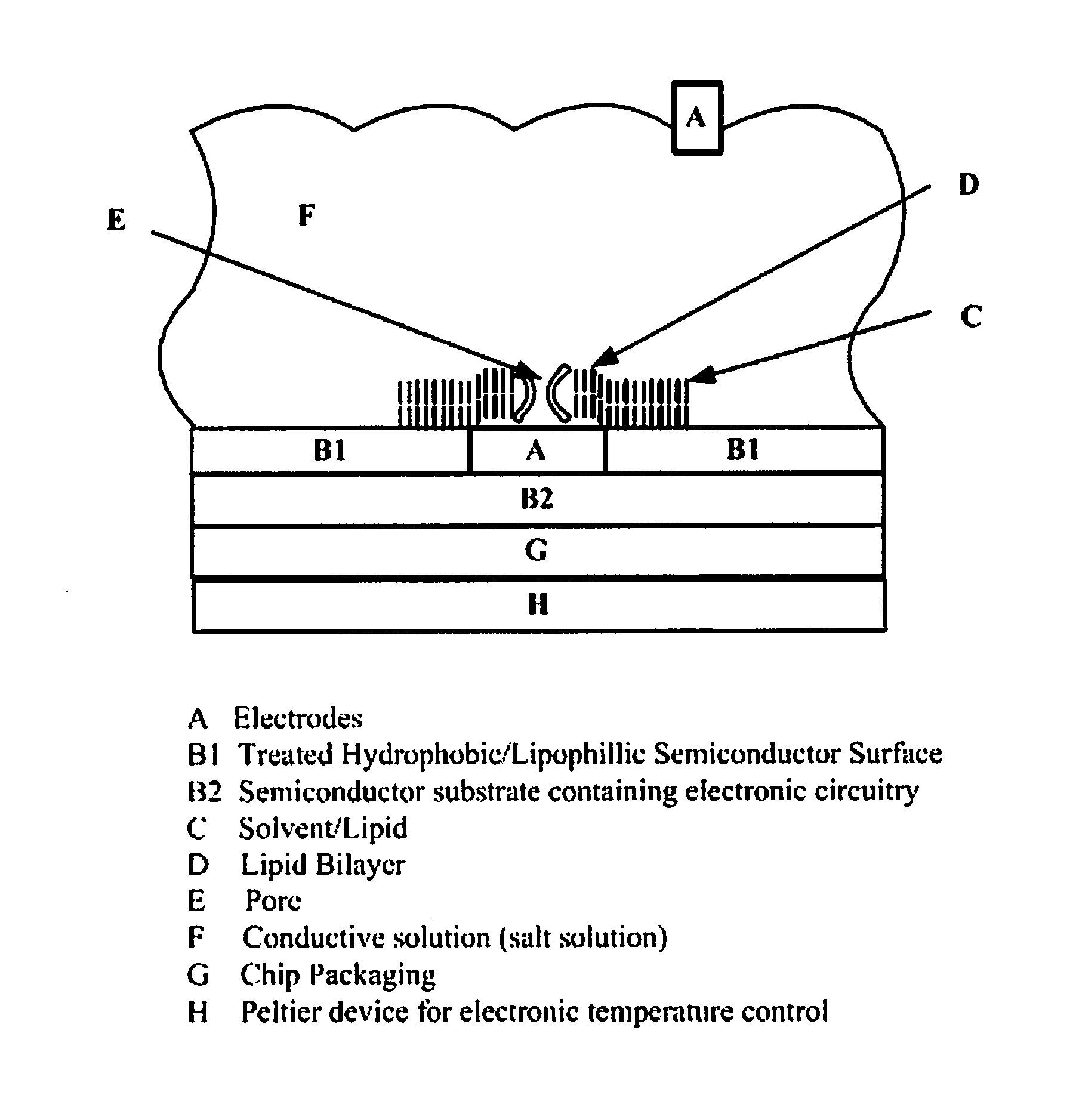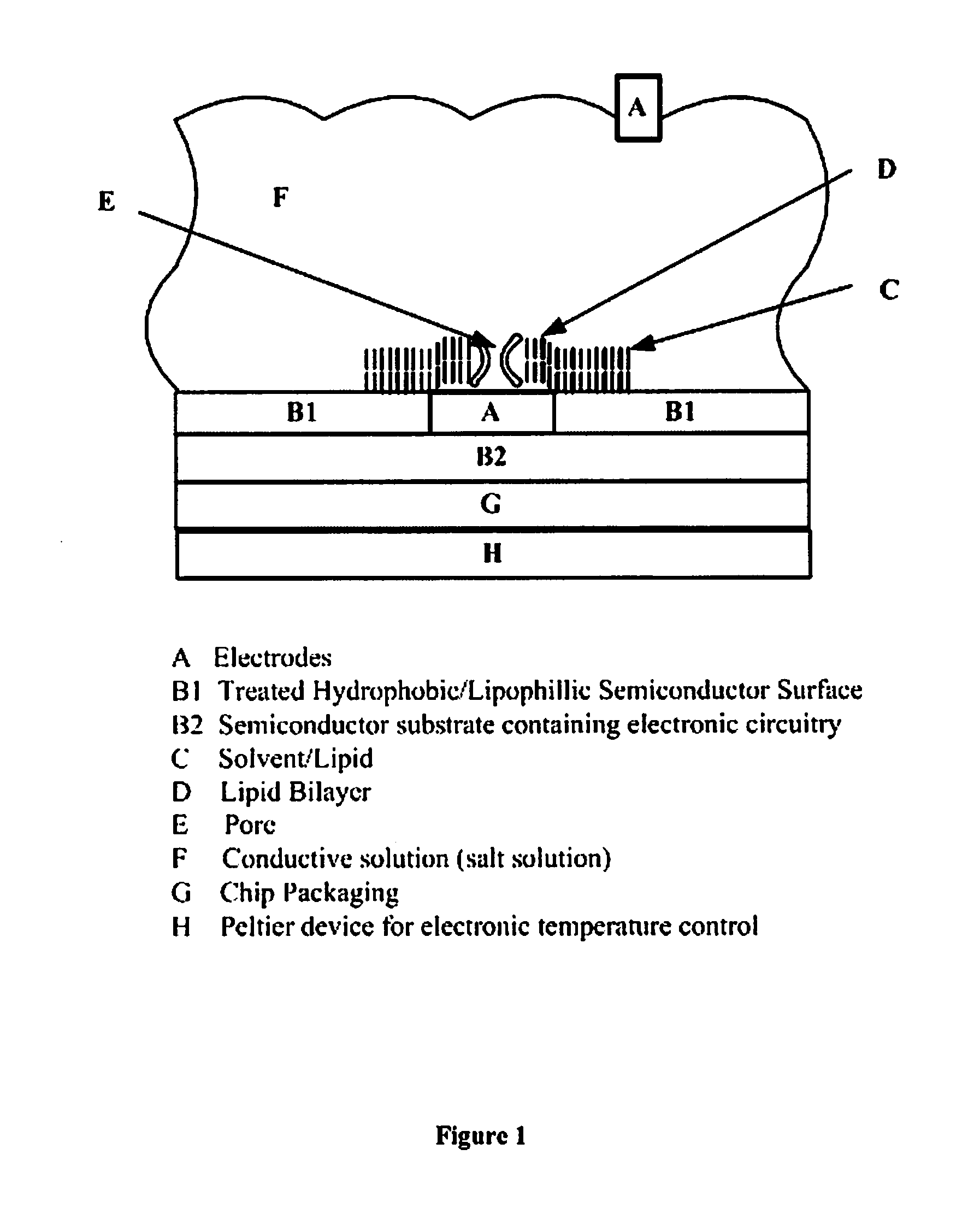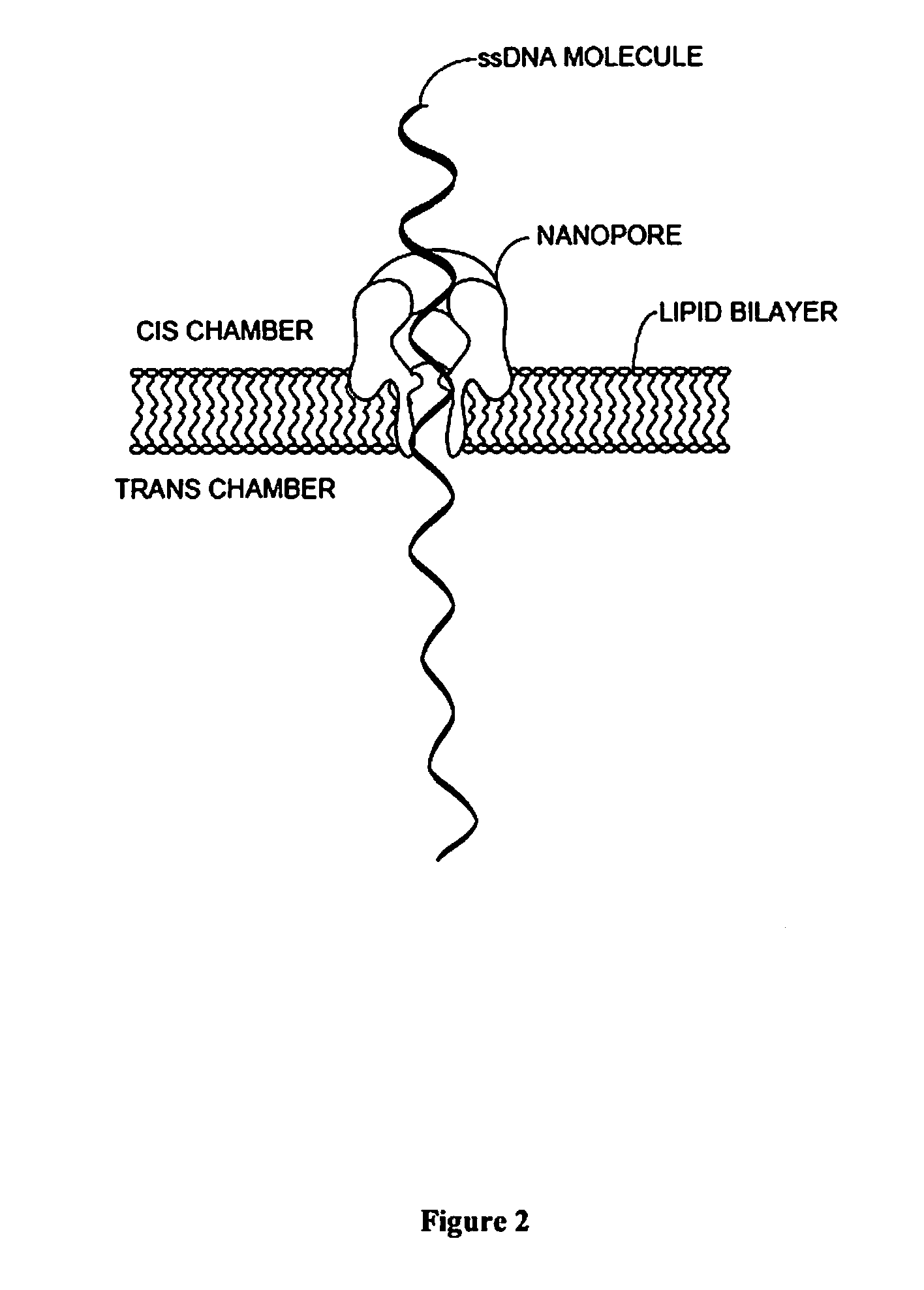Nanopore-based single DNA molecule characterization using speed bumps
a technology of speed bumps and nanopores, applied in the direction of fluid pressure measurement, liquid/fluent solid measurement, peptides, etc., can solve the problems of ss dna translocation rapidity, inability to resolve electrical signals for reliable dna sequencing, and relatively long dna duplex section to stall ss dna in the nanopor
- Summary
- Abstract
- Description
- Claims
- Application Information
AI Technical Summary
Benefits of technology
Problems solved by technology
Method used
Image
Examples
example 1
PB2 Structure (I)
[0130]A ss test DNA having a BS2 on one end was captured in a nanopore at a temperature lower than T2 and released at a temperature higher than T2 (FIG. 12).
[0131]The BS2 (BS2-1) was a DNA 5-base duplex hairpin structure formed from a PB2 having a sequence of 5′-CCCCC CCCCC TTATA CCCCT ATAA-3′ (SEQ ID NO. 1, PB2-1). BS2-1 had melting temperature of about 15° C., and a AG of about −0.96 kcal / mol at 5° C. according to the simulation using UNAFOLD program. This moderately low AG indicated that BS2-1 had a relatively low binding energy.
[0132]In FIG. 12, the solid line showed the change in temperature from 2° C. to 14° C. The dots represented individual DNA captures, meaning that PB2-1 formed BS2-1 at the corresponding temperature and was captured in the nanopore. The captures were present when the temperature was about or lower than T2 (about 5° C.), indicating that BS2-1 was formed from PB2-1 and the DNA was stalled in the nanopore. The capture of the DNA disappeared w...
example 2
PB1 and PB2 Structure (II)
[0134]A PB1 forms a BS1 at a first temperature (T1) that is higher than the second temperature (T2) at which a BS2 is formed from a PB2. T2 is higher than a working temperature (Tw). In this example, Tw is below room temperature. Thus, PB1 is designed to have a relative long DNA duplex segment (either in a DNA duplex with an anti-sense DNA segment, or in a hairpin structure) such that the desired melting temperature of the relative long DNA duplex segment is achieved.
[0135]PB2 is designed to have a lower melting temperature and a high binding energy (ΔG=about −1˜−5 kcal / mol, about −4˜−6 kcal / mol, about −4˜−5 kcal / mol, about −4.5 kcal / mol, or about −4.0 kcal / mol at the working condition). A molly bolt or branched molecule has been designed to provide a BS2 having low T2 while not easily dissociated at the working condition.
[0136]An example of PB1 has a sequence of 15 bases and a 4 base A loop; 5′-CGTCT AGCGT TGCCG AAAAC GGCAA CGCTA GACG-3′ (SEQ ID NO. 2, PB ...
example 3
Stalling DNA by 4-Base Duplex Segments
[0144]This example illustrates a 4-baser duplex segment stalled the ss test DNA in a nanopore for a dwelling time sufficient to obtain desired sequence information.
[0145]The test DNAs were the following:
[0146]A test DNA was formed by self-hybridization of DNA-1: 5′-CCCCC CCCCC GCGC-3′ (SEQ ID NO. 4). DNA-1 was dissolved in biology grade water, heated to 90° C. and then left to cool to room temperature for self-hybridization. A DNA-1 molecule hybridized with another DNA-1 molecule to form a self-hybridized DNA-1 structure having a 4-base GCGC duplex segment at the 3′ ends and two overhanging ss 10-C tails at the 5′ ends thereof. At the working condition, the self-hybridized DNA-1 structure entered a nanopore with one of the two overhanging ss 10-C tails, stalled in the nanopore by the 4-base duplex segment at the 3′ end for a dwelling time, and then when the 4-base duplex segment dissociated, the self-hybridized DNA-1 structure was converted to t...
PUM
| Property | Measurement | Unit |
|---|---|---|
| temperature | aaaaa | aaaaa |
| temperature | aaaaa | aaaaa |
| temperature | aaaaa | aaaaa |
Abstract
Description
Claims
Application Information
 Login to View More
Login to View More - R&D
- Intellectual Property
- Life Sciences
- Materials
- Tech Scout
- Unparalleled Data Quality
- Higher Quality Content
- 60% Fewer Hallucinations
Browse by: Latest US Patents, China's latest patents, Technical Efficacy Thesaurus, Application Domain, Technology Topic, Popular Technical Reports.
© 2025 PatSnap. All rights reserved.Legal|Privacy policy|Modern Slavery Act Transparency Statement|Sitemap|About US| Contact US: help@patsnap.com



